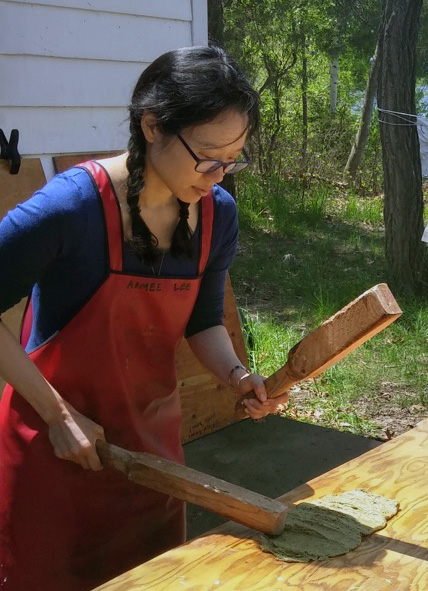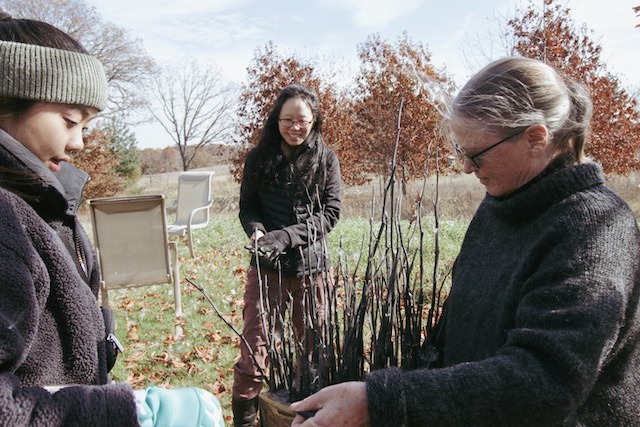Teaching
You could spend your entire life with hanji and still have more to learn, so choose an entry point that feels the best for you. Some want to make hanji, while others want to transform it with Korean techniques that include joomchi, jiseung, jido, jiho, and natural dyeing. Be open to learning how to make it or use it, and then see where these roads lead you. Doctors train for years, and through their practice decide how to specialize or if they even want to stay in the field. The same goes for papermakers. Before applying contemporary techniques to hanji, I encourage you to start with traditional methods to build an essential foundation for further experimentation: hanji survives today because of centuries of R&D that we can learn so much from. I am growing an American branch of hanji, rooted in Korea but extending past its borders through migration, displacement, and curiosity.
* * *
I want to nurture people committed to hanji, whether in creating their own equipment and studios to make it, becoming versatile in paper manipulation techniques, cultivating plants, or integrating it into their lives. I believe in direct transmission as the richest and most beneficial way to learn, and teach out of my private hanji studio a few times a year. I offer information in cultural context and much of my research has been documented in print (Hanji Unfurled, Making Milkweed Paper, Welcome to Jiseung) and online (photos, videos, blog). I welcome you to meet hanji in the place that suits you now.


